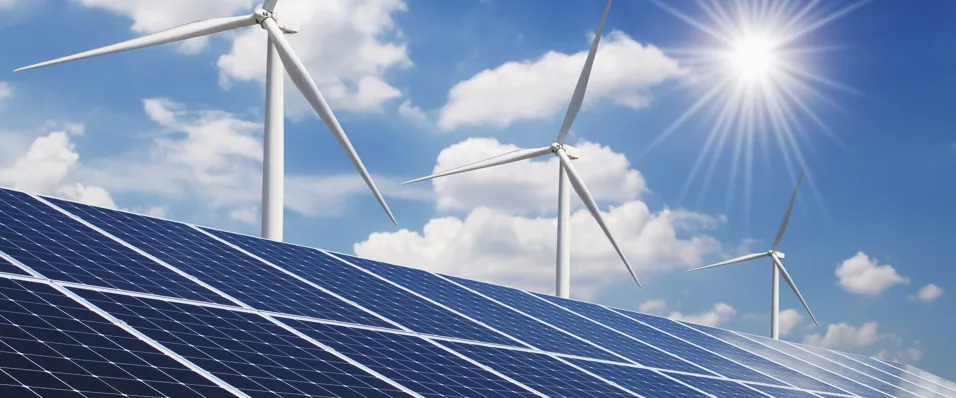
Latest developments in International Standards for prosumers low-voltage electrical installations
IEC 60364-8-2 is a new section within IEC 60364, known as Prosumers Electrical Installations (PEI), which incorporates energy efficiency measures, interface with the smart grid and manages electricity consumption as well as managing renewable sources of electricity and energy storage. This is a complex standard and this article only mentions some of the many requirements concerning prosumers electrical installations.
The concept of PEI has been developed to answer the needs of the end user, for example, where the PEI has a storage capability; the user could take advantage of low demand to store the energy when its price may be lower.
Also, with active energy management the end-user should be able to permanently monitor and control his/her own electricity consumption and his/her own electricity production. The concept of PEI has also been developed to take advantage of renewable sources (such as PV and wind turbines) and energy storage.
There are different types of PEI. They consist of Individual Prosumers Electrical Installations, Collective Prosumers Electrical Installations and Shared Prosumers Electrical Installations.
Individual Prosumers Electrical Installations are considered to be an electrical installation (for example a private house or workshop) that can either produce or consume electrical energy. Three operating modes are considered for the Individual Prosumers Installation. These are:
- direct feeding mode (where the installation is supplied from grid/supply network)
- the island mode (where the installation is supplied from its own generator), and
- reverse feeding mode (where the installation supplies electricity back to the grid/supply network).
Collective Prosumers Electrical Installations (Collective PEI) are considered to be several consuming electrical installations connected to the same public distribution network and sharing one common set of local power supplies and energy storage equipment.
Collective Prosumers Electrical Installations (Collective PEI) could be, for example, a group of single private houses, or flats in a building, or small shops in a shopping centre that have a common electrical power supply from one separate unit (generator/energy storage) producing energy and from the grid/supply network.
Three operating modes are considered for the Collective Prosumers Installation. These are:
- direct feeding mode (where the installation is supplied from grid (supply network)
- the island mode (where the installation is supplied from its own generator), and
- reverse feeding mode (where the installation supplies electricity back to the grid (supply network).
Shared Prosumers Electrical Installations (Shared PEI) could be for example where a group of individual houses may group their interests in accepting to share their supply with their neighbours from their own renewable power sources. Each house owner may have installed private renewable energy power sources which can either supply the private electrical installation or supply the group of private electrical installations.
This is considered to be a Shared Prosumers Electrical Installation. Three operating modes are considered for the Shared Prosumers Electrical Installation. These are:
- charging mode (where the installation is supplied from grid/supply network)
- the island mode (where the installation is supplied from its own generator), and
- and reverse feeding mode (where the installation supplies electricity back to the grid (supply network).
The prosumers electrical installation (PEI)
A prosumers electrical installation is defined as low-voltage electrical installation connected or not to a public distribution network (the grid) which is able to operate with local power supplies (e.g. photovoltaic panels or wind turbine), and/or with local storage units (e.g. batteries), and that monitors and controls the energy from the connected sources delivering it to current-using equipment (e.g. motors, heating, lighting, appliances such as washing machines etc.), and/or local storage units (for example batteries), and/or the public distribution network.
There are a wide range of micro generation technologies including: solar photovoltaic (PV), wind turbines, small scale hydro and micro CHP (combined heat and power).
One of the key components of the prosumers electrical installation is the Electrical Energy Management System (EEMS). The objectives of the EEMS are to control the connection of the prosumers electrical installation to the smart power grid, and to manage locally the electrical energy production and the electrical consumption as well as managing the energy procurement from the grid (supply network). This is carried out using meters and measuring equipment in order to communicate correct electricity parameters to the EEMS and direction of energy flow.
Technical issues
Technical issues mentioned in IEC 60364-8-2 comprise a whole range of safety issues, including protection against electric shock, system earthing, selection of protective devices, isolation of the installation, protection against overcurrent, outage of the public network, and protection against transient overvoltages.
Further technical issues in this standard include requirements concerning interaction with the public network, energy storage, designing for flexibility of load and generators, electric vehicle charging, and selectivity between current protective devices.
Conclusion
Please note that this article is only intended as a brief overview of a new complex international standard which may or may not be incorporated in BS 7671 in the future. For more information please refer to IEC 60364-8-2.
